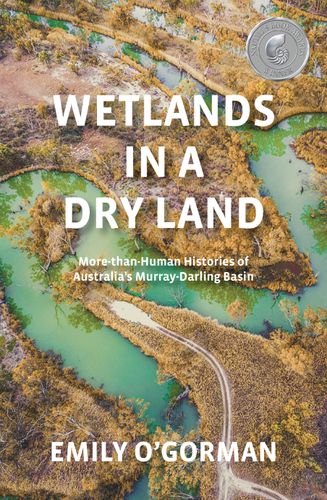Readings Newsletter
Become a Readings Member to make your shopping experience even easier.
Sign in or sign up for free!
You’re not far away from qualifying for FREE standard shipping within Australia
You’ve qualified for FREE standard shipping within Australia
The cart is loading…






How have people and wetlands shaped each other in Australia's Murray-Darling Basin? What counts as a wetland, especially in Australia, the driest inhabited continent on earth?
In the name of agriculture, urban growth and disease control, humans have drained, filled or otherwise destroyed nearly 87 percent of the world's wetlands over the past three centuries. Only recently have wetlands been widely recognised as worth preserving for their diverse plants, animals, insects, and their human histories.
Examining Australia's own Murray-Darling Basin, environmental historian Emily O'Gorman shows how people and animals have shaped wetlands since the late nineteenth century. O'Gorman draws on archival research and original interviews to illuminate how Aboriginal peoples acted then and now as custodians of the landscape, how the movements of water birds affected farmers and how mosquitoes have defied efforts to fully understand, let alone control, them.
Situating Australia's history within global environmental humanities conversations, O'Gorman argues that we need to understand wetlands as socioecological landscapes that transcend the nature-culture divide and to embrace non-Western ways of knowing and being. Only then can we begin to create sustainable relationships with, and futures for, the wetlands.
$9.00 standard shipping within Australia
FREE standard shipping within Australia for orders over $100.00
Express & International shipping calculated at checkout
How have people and wetlands shaped each other in Australia's Murray-Darling Basin? What counts as a wetland, especially in Australia, the driest inhabited continent on earth?
In the name of agriculture, urban growth and disease control, humans have drained, filled or otherwise destroyed nearly 87 percent of the world's wetlands over the past three centuries. Only recently have wetlands been widely recognised as worth preserving for their diverse plants, animals, insects, and their human histories.
Examining Australia's own Murray-Darling Basin, environmental historian Emily O'Gorman shows how people and animals have shaped wetlands since the late nineteenth century. O'Gorman draws on archival research and original interviews to illuminate how Aboriginal peoples acted then and now as custodians of the landscape, how the movements of water birds affected farmers and how mosquitoes have defied efforts to fully understand, let alone control, them.
Situating Australia's history within global environmental humanities conversations, O'Gorman argues that we need to understand wetlands as socioecological landscapes that transcend the nature-culture divide and to embrace non-Western ways of knowing and being. Only then can we begin to create sustainable relationships with, and futures for, the wetlands.
Discover the wonders of nature in this fascinating and awe-inspiring collection.
Discover new Australian nonfiction books at Readings, with biography, memoir, essays and analysis.
Discover new nonfiction books at Readings, with biography, memoir, essays and analysis.